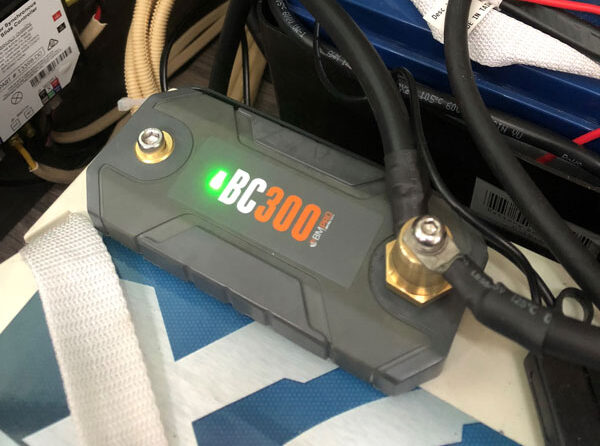
12V Guru – Uncover Your Battery’s Secrets
What’s going on with my batteries? Our 12V Guru discusses how shunts can help you track your batteries activity
Hi Guru,
We recently put a couple of large Lithium batteries into our van but reckon the charger is struggling. Should we consider upgrading the charger even though it says it can charge Lithiums?
Pete Mason
QLD
Hey Pete,
Thanks for your question as this is one that seems to be a hot topic in many of the forums and chat circles on social media recently. Appropriately sizing a battery charger to the battery bank in your RV is crucial for several important reasons, which contribute to both the efficiency and longevity of your battery system.
Battery health and longevity are critical to ensure that you are not having to reinvest in new batteries every few years. Well maintained batteries that are charged appropriately and with the right sized charger should mean that our batteries are lasting between 5-8 years depending upon how much you use the van. Not that it matters too much with Lithium batteries however with lead acid varieties you need to avoid overcharging. A charger that is too large can deliver too much current, leading to overcharging.
Overcharging can cause excessive gassing (hydrogen and oxygen production), which can damage the battery by drying out the electrolyte in lead-acid batteries or causing thermal runaway in lithium batteries, especially if the BMS doesn’t perform properly. Conversely, a charger that is too small may not fully charge the battery, leading to sulfation in lead-acid batteries, where lead sulphate crystals form and reduce the battery’s capacity and lifespan. For lithium batteries, undercharging can prevent the battery from reaching its optimal performance state.
Efficiency is also important as a properly sized charger ensures that the battery goes through correct charge stages: bulk, absorption, and float for lead-acid batteries, and appropriate stages for lithium batteries. This helps in fully charging the battery efficiently without wasting energy.
A regular issue that we also see when diagnosing these concerns is that RVers have upgraded their battery setups but not upgraded other critical components. Many find that not only their AC battery charger but their solar and/or DC-DC charging from the alternator is not powerful enough to refill “the tank” between heavy demand on the battery. In some cases, even the alternator in the towing vehicle is not sufficient to meet the requirements.
Another issue to consider is that electrical devices such as battery chargers put out heat due to their operation and conversion inefficiencies. When a battery charger is undersized it will be operating during various stages of the charging process at full capacity and for an extended period. This results in the internals of the charger reaching cut-off or de-rating temperatures resulting in the charger’s software slowing down charging output to protect the components inside the charger. For example, a 10Amp charger trying to charger trying to charge a 400Ahr battery bank will require the charger to operate for over 20+ hours to complete the process. Not only would the charger result in becoming too hot but it may also be smart enough to “time-out” and not charge further to protect what it may think is a faulty battery.
As some chargers are not stored in optimal locations within vans, such as under beds surrounded by pillows and doors or in a non-ventilated cupboard a charger will also overheat and de-rate its output to protect itself. A charger that should be outputting 30Amps may only put out 10Amps in this scenario leaving an RVer to believe the charger is not delivering on what is expected and only a half-charged battery.
In summary, a battery charger should be around 20-30% of the capacity of a battery bank, keep it well ventilated and match the input power from all sources carefully to the battery capacity.


What’s going on with my batteries? Our 12V Guru discusses how shunts can help you track your batteries activity

An electrical shunt is a critical component in electrical circuits. Find out why it’s important and how it functions right here.

Our 12V Guru discusses what to look for in safety and functionality with 12Volt wiring when looking at second hand vans
